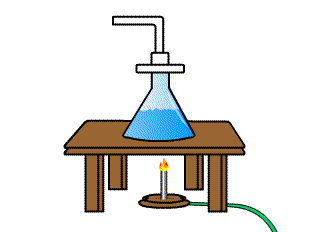Zero Order Reactions
Table of Content |

 A reaction is said to be of zero order if its rate is independent of the concentration of the reactants, i.e., the rate is proportional to the zeroth power of the concentration of the reactants.
A reaction is said to be of zero order if its rate is independent of the concentration of the reactants, i.e., the rate is proportional to the zeroth power of the concentration of the reactants.
A → products
to be of zero order,
![Rate =- \frac{d[A]}{dt} = k[A]^0](https://files.askiitians.com/cdn1/cms-content/common/latex.codecogs.comgif.latexrate-_fracdadtka0.jpg)
Integrating both sides
[A] = – k t + C.....(i)
where, C is the constant of integration
At t = 0, the concentration of the reactant A = [A]0, where [A]0 is initial concentration of the reactant.
Substituting in equation (i)
[R]0 = –k × 0 + C
[R]0 = C
Substituting the value of C in the equation (i)
[A] = -kt + [A]0 ….. (ii)
Comparing equation (ii) with equation of a straight line.
y = mx + c
If we plot [A] against t, we get a straight line with slope = –k and intercept equal to [A]0.
Some photochemical reaction and a few heterogeneous reactions are zero-order reactants. Such reactions are not common.
You can refer to the following video for the zero order reactions
Characteristics of Zero Order Reaction
-
The concentration of reactant decreases linearly with time.[A]t = [A]0 - kt
-
The time required for the reaction to be complete, i.e., time at which [A] is zero.
tcompletion = [A]0/k = (Initial concentration)/(Rate constant) -
The units of k are mol L-1 time-1.
Half-Time or Half-Life Period of a Zero Order Reaction
For zero order reaction, we know that
[A] = -kt + [A]0
![k = \frac{[A]_{o}-[A]}{t}](https://files.askiitians.com/cdn1/cms-content/common/latex.codecogs.comgif.latexk_fraca_o-at.jpg)
at half life of reaction,
t = t½ & [A] = [A]o/2
So
![k = \frac{[A]_{o}-[A]_{o}/2}{t}= \frac{[A]_o}{2t_{1/2}}](https://files.askiitians.com/cdn1/cms-content/common/latex.codecogs.comgif.latexk_fraca_o-a_o2t_fraca_o2t_12.jpg)
![\Rightarrow t_{1/2} = \frac{[A]_o}{2k}](https://files.askiitians.com/cdn1/cms-content/common/latex.codecogs.comgif.latex_rightarrowt_12_fraca_o2k.jpg)

Question 1:
Rate of zero order reaction.
a. depends on concentration of reactants.
b. depends on concentration of products.
c. depends on concentration of both reactant and product.
d. does not depend on concentrations.
Question 2:
Unit of rate constant for a zero order reaction is
a. mol L-1 time-2.
b. mol2 L-1 time-1.
c. mol L-1 time-1.
d. mol-1 L-1 time-1.
Question 3:
If we plot [A] against t, we get a straight line with slope =
a. rate constant
b. arrhenius constant
c. temperature coefficient
d. equilibrium constant
Question 4:
For zero order reaction d[A] =
a. -kdt
b. -k[A]0
c.-k[A]0dt

| Q.1 | Q.2 | Q.3 | Q.4 |
| d | c | a | a |
Related Resources
-
Click here to get detailed Syllabus of IIT JEE
-
Look here for Books of Chemistry for IIT JEE
-
You can also refer to Introduction to chemical kinetics
To read more, Buy study materials of Chemical Kinetics comprising study notes, revision notes, video lectures, previous year solved questions etc. Also browse for more study materials on Chemistry here.


 2HCl(g)
2HCl(g) N2 + 3H2
N2 + 3H2 ICH2COCH3 + HI
ICH2COCH3 + HI